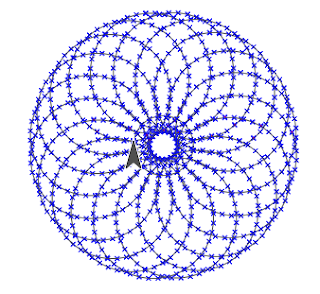The Hour of Code was a success! I loved meeting the students who were interested in coding. There was a session for paper embroidery and for digital embroidery. In the paper embroidery station, a few students told me how it was "cool" that they could transfer a code onto paper, making it "3D." The code they sewed was the paw-print and it can be found here . In the digital embroidery station, the students used a computer for TurtleStich and then printed out the code on the digital embroiderer. There were two students who wanted to code a Rockets logo. When they first started coding and wanted the action of the block to repeat, they kept clicking on the mouse, but I told them that if they were to run the script, the code of them repeating the block would be lost. I taught them to use the repeat block and once they understood it, they used it for the rest of their code. "It's all about trial and error," I told them. And so, they experiment





